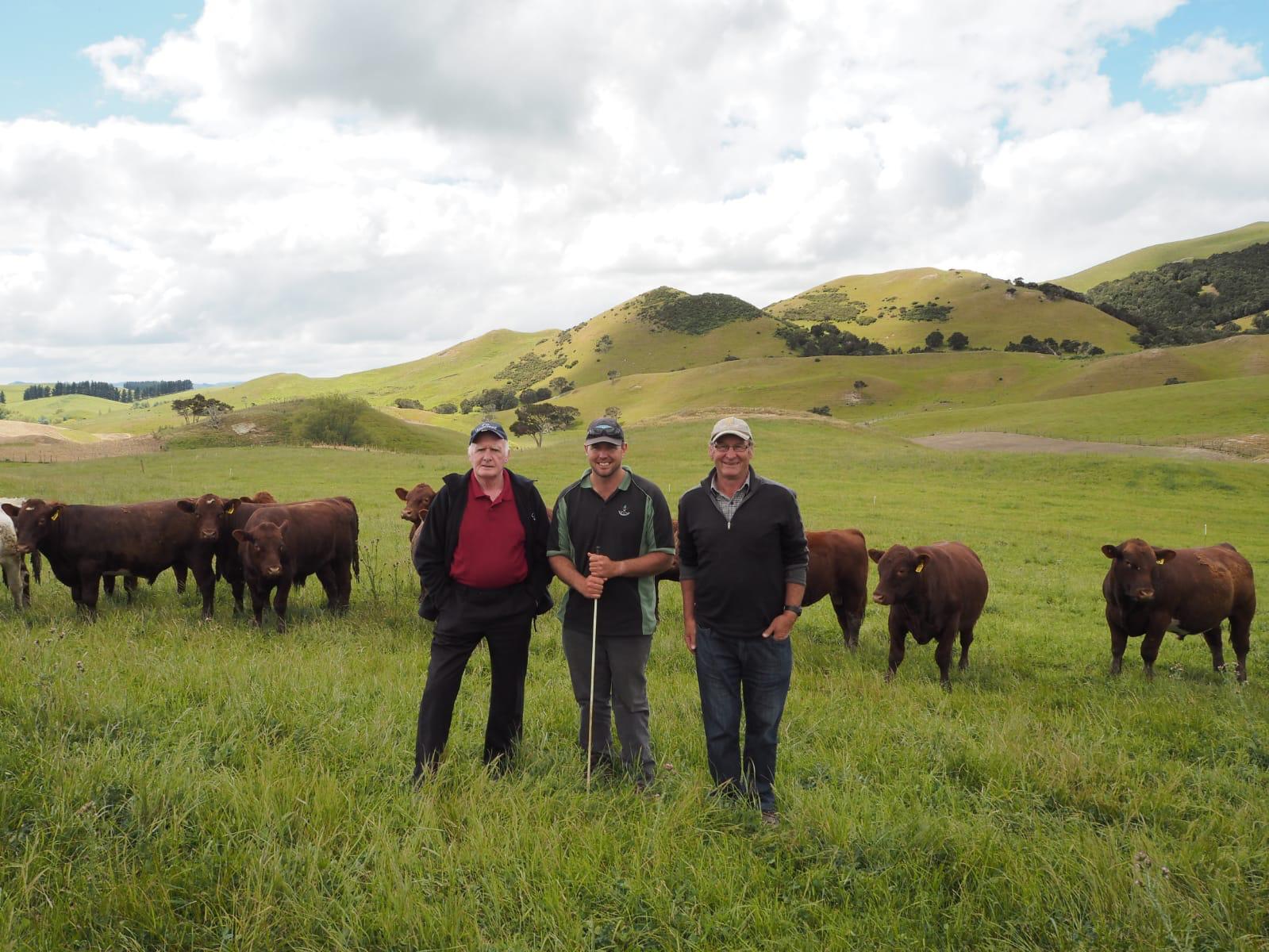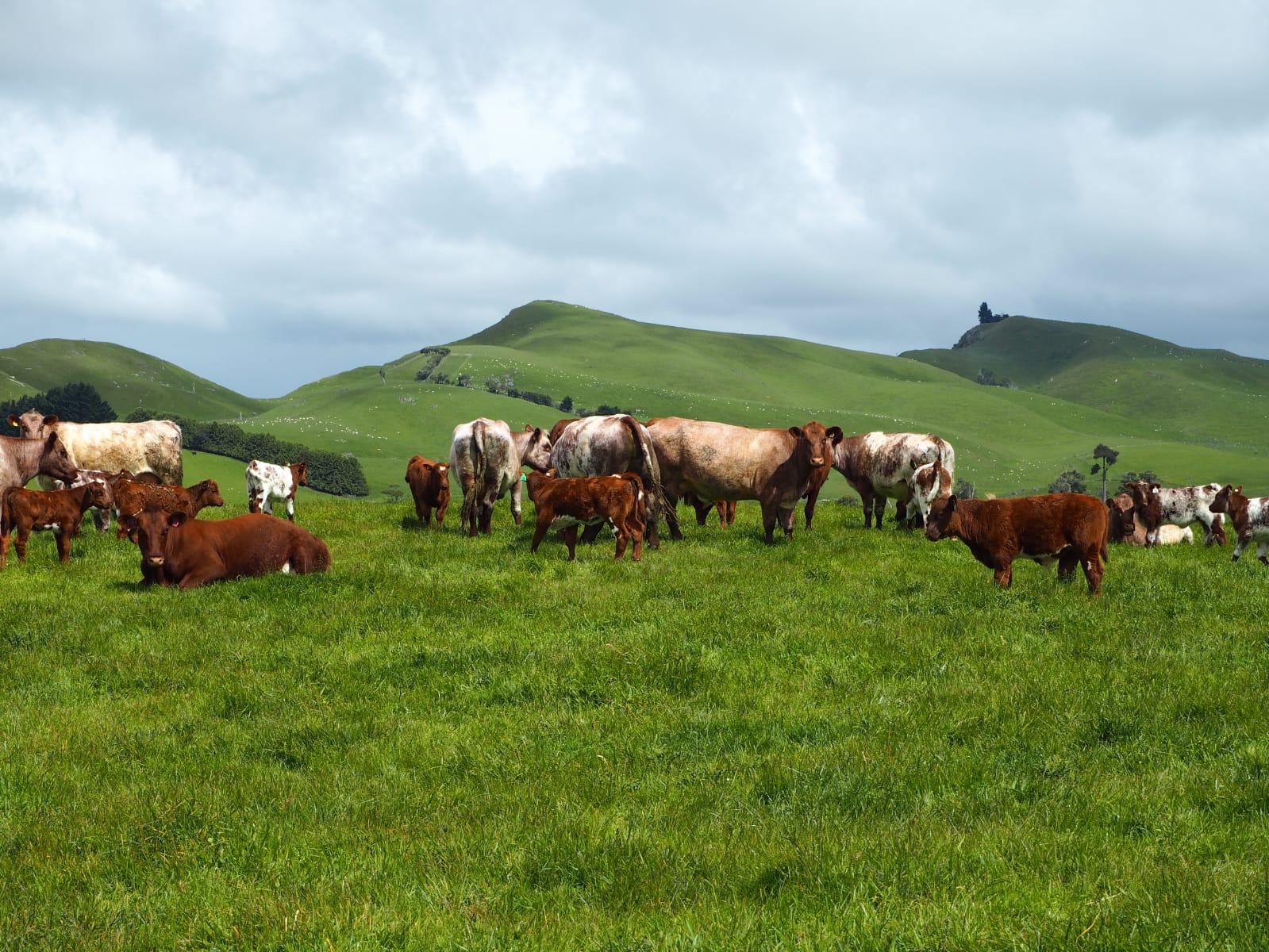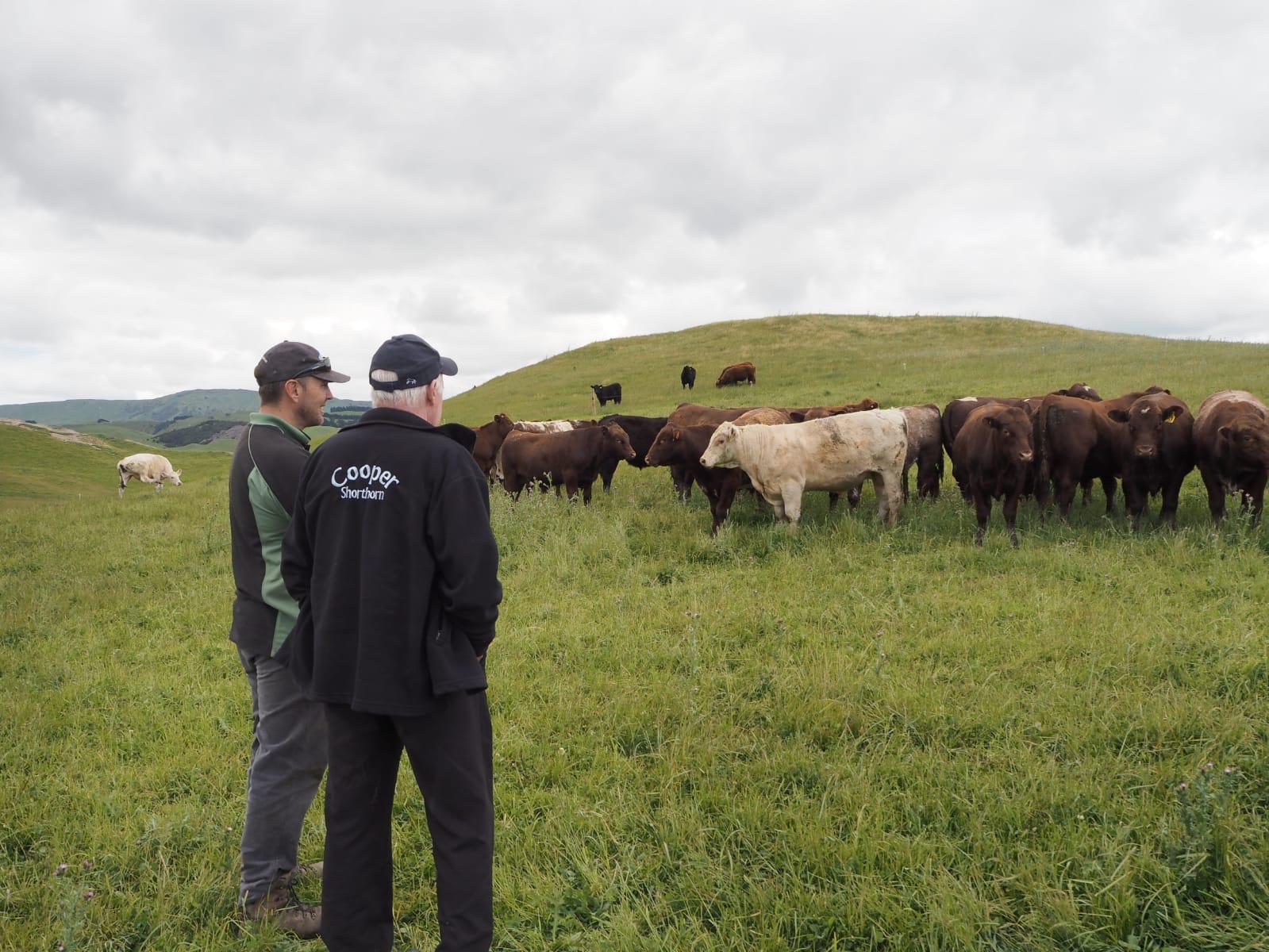Beef Shorthorn down under
I visited two of my daughters last year, who were living in New Zealand and, as is the case with any of my travels, I managed to squeeze in some visits to view some Shorthorn cattle while I was on the other side of the world.
It’s not surprising that things are done a little differently, when you go to the furthest point on earth from my home in Armagh in Northern Ireland. With large hilly farms and a temperate climate, the herds are wintered and calved outside in spring, mainly unassisted, which cuts down significantly on labour. Another significantly different area was the spreading of fertiliser – I witnessed first-hand the use of a plane to spread fertiliser, a truly innovate way of getting nutrients to the otherwise inaccessible terrain.
I was lucky to visit some really interesting farms and extremely welcoming people on my trip.
David Blackwood in Hinewaka is situated 20kms south-east of Masterton in the Gladstone district. The property is 600ha of rolling to steep hill country based on limestone soils. Shorthorns have been farmed by the family for over 150 years. Today, a herd of 150 cows is run under commercial conditions and an on-farm bull sale is held every year.
Jim and Nick Syme of Hiwiroa Stud farm, 500 ha of medium hill country in the Flemington district 20 km south of Waipukurau and have around 100 stud cows.
It was great to see New Zealand genetics in action on their home environment. As we have being using a junior herd sire Cooper Kiwi at home in Northern Ireland which traces back to Bill Austin’s Austins Bonny cow family. In both herds cattle were low maintenance, easily managed decent sized cows, which were clearly easy fleshing types.
During a road trip of the South Island, we also visited a herd of over 1,000 dairy shorthorns, which was different to my normal beef sightseeing but definitely an amazing sight to see.
Colm McGuigan
Cooper herd




